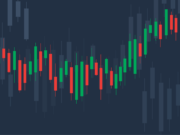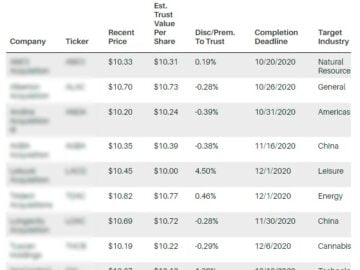Seeking out great stocks to buy is essential, but many would say it’s even more important to know which stocks to steer clear of. A losing stock can eat away at your precious long-term returns. So, figuring out which stocks to trim or get rid of is essential for proper portfolio maintenance.
Even the best gardens need pruning, and our team has spotted a few stocks that seem like prime candidates for selling or avoiding. Continue reading to find out which three stocks our team is staying away from this week.
Surging house prices have made buying a home significantly less affordable. At the same time, the Federal Reserve has signaled its intention to raise interest rates to counteract inflation. That’s driven mortgage rates above 5% — the highest they’ve been in more than a decade. These trends are beginning to weigh on demand for real estate services which could exacerbate Redfin’s (RDFN) pre-existing profitability issues.
Competition on home offers written by Redfin agents is on the decline for the first time since September. March’s bidding war rate was 69.3%, down from 71.9% in February. The drop in homebuyer competition is just one sign that the housing market is beginning to slow down. Online housing searches and home tours are also declining, and more sellers are lowering their asking prices.
“Most homebuyers are still encountering bidding wars, but competition is beginning to cool because surging mortgage rates and home prices are prompting some Americans to back out or put their buying plans on hold,” said Redfin Chief Economist Daryl Fairweather. “We expect bidding wars to ease further in the coming months as rising mortgage rates price more buyers out of the market.”
If housing sales slow, Redfin could struggle to integrate its recent acquisitions, such as mortgage lender Bay Equity Home Loans, which could stunt its growth and add to its profitability issues. The current consensus recommendation is to Hold RDFN. We’ll steer clear until conditions improve.
With Roku’s price nearly 80% off of its July ATH, eager investors may see a buying opportunity here. Considering the obstacles that the not-yet-profitable company is up against, we beg to differ.
The supply chain disruptions that hampered growth in the U.S. television market in 2021 will likely persist well into 2022. “Overall TV unit sales are likely to remain below pre-Covid levels, which could affect our active account growth,” Anthony Wood, Roku’s founder, and CEO wrote in the company’s letter to shareholders. “On the monetization side, delayed ad spend in verticals.
For the first quarter, Roku said it sees revenue of $720 million, which implies 25% growth. Analysts were projecting revenue of $748.5 million for the period. Pivotal Research was one of several firms to decrease its rating on Roku recently. Analyst Jeffrey Wlodarczak downgraded the stock from Hold to Sell and slashed its price target to $95 from $350.
“The bottom line is with increasing competition, a potential significantly weakening global economy, a market that is NOT rewarding non-profitable tech names with long pathways to profitability, and our new target price, we are reducing our rating on ROKU from HOLD to SELL,” the analyst wrote in a note to clients.
Healthcare facility maintenance and food service provider Healthcare Services (HCSG) made our list of stocks to avoid after reporting horrific Q4 results. The company reported Q4 earnings of $0.03 per diluted share, down from $0.37 in Q4 2020 and 57% lower than consensus expectations. What’s more, EBITDA missed the mark by 54%.
HCSG spending has been rising for the past few quarters and spiked more than 7% quarter over quarter in Q4. Management doesn’t expect the cost of service to come back to their historical target of 86% until the end of the year, and that seems like an optimistic estimate.
“Our fourth-quarter results reflect continued margin pressures resulting from workforce availability, inflation, and supply chain disruption. We remain actively engaged with our customers to modify our service agreements to adjust for the extraordinary inflation experienced during the second half of 2021, as well account for future inflation on a real-time basis,” said CEO Ted Wahl.
With occupancy rates at nursing facilities across the U.S. making a much slower recovery from the pandemic than expected, the industry has shed more than 220,000 jobs in the past year. Healthcare Services struggled to find footing in 2021, and the prospects for 2022 are not looking great.
HCSG has underperformed significantly when compared to the broader market. Over the past 12 months, the S&P 500 is 7% higher while HCSG is lower by 40%. The pros on Wall Street give the stock a Hold rating. We’ll stay away until headwinds subside.














